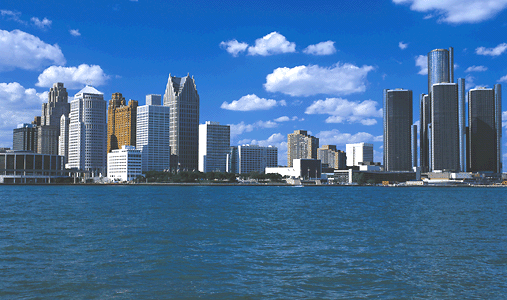Detroit Files for Bankruptcy
Friday, July 19th, 2013July 19, 2013
Michigan Governor Rick Snyder confirmed yesterday that the city of Detroit has filed for bankruptcy. “Let me be blunt: Detroit’s broke,” he told the press. Detroit’s state-appointed emergency manager, Kevyn Orr, asked a federal judge yesterday to place the city under bankruptcy protection. The largest U.S. city to ever file for bankruptcy, Detroit has debts of $18 billion to $20 billion. The city’s creditors include holders of municipal bonds as well as public-sector workers and their pension funds. Analysts note that the bankruptcy will likely leave city employees, both current and retired, with significant reductions in their incomes and benefits.
Once an industrial powerhouse, Detroit has been in decline for decades. In 1950, the city had 1.8 million residents. Through the following decade, thousands of white middle-class families moved from Detroit to new developments outside of the city. Race riots in 1967 hastened the exodus. Today, the population is 700,000. With an estimated 70,000 properties abandoned–including vast empty factories and downtown skyscrapers–Detroit’s tax base has not covered city services for years. Past administrations borrowed to make up the difference, leaving the city hopelessly in debt.

Analysists fear that the loss of such vital city services as adequate police and fire protection could force such businesses as the General Motors Corporation (GM) out of Detroit. The Renaissance Center (right) houses GM's world headquarters. (Corbis)
Although Mayor Dave Bing has vowed that public services will be kept running, fire, police, and ambulance services are already near collapse. Police response times to 911 calls average 58 minutes, compared with 11 minutes nationally. Two-thirds of Detroit’s entire ambulance fleet was not in service in the first-quarter of 2013. Forty percent of the city’s streetlights do not work, and half of the city’s parks have been closed since 2008. Given the situation, analysts voiced concerns that such businesses as General Motors may move their operations out of the city.
If the bankruptcy is approved, Orr would be allowed to liquidate city assets to satisfy creditors and pensions. He raised the specter of selling the vast and highly valuable collection of the Detroit Institute of Arts when some weeks ago he ordered the appraisal of 60,000 pieces of art.
Additional World Book articles:
- Detroit 1967 (a Back in Time article)
- Detroit 1980 (a Back in Time article)
- Detroit 1982 (a Back in Time article)
- Detroit 1990 (a Back in Time article)


